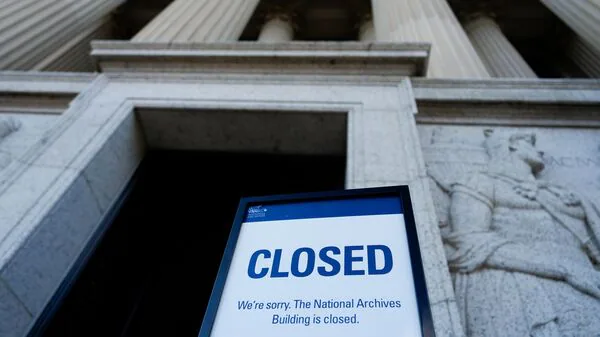
US Government Shutdown: What Happens Next As Trump Threatens Mass Layoffs? 5 Key Things You Must Know
In previous shutdowns, federal employees were mostly furloughed and later given back pay once funding was restored. This time, President Trump has suggested layoffs are on the table.
“When you shut it down you have to do layoffs, we'd be laying off a lot of people,” Trump told reporters in the Oval Office on Tuesday. He added that shutdowns could be used to eliminate“Democrat things” - programs and workers he claims his administration does not want.
Last week, the White House Office of Management and Budget (OMB) directed agencies to prepare“reduction in force” (RIF) plans, which would allow for firings beyond standard furloughs (NBC News, Politico).
Follow US Government Shutdown LIVE Updates here 2. 750,000 federal workers affected - some could lose jobsThe Congressional Budget Office estimates about 750,000 federal workers will be furloughed each day of the shutdown , at a daily cost of around $400 million in lost compensation.
Traditionally, furloughed workers are guaranteed retroactive pay under a 2019 law. But if Trump pursues layoffs, that protection would not apply.
Two major federal unions - the American Federation of Government Employees and the American Federation of State, County and Municipal Employees - have already sued the Trump administration in federal court, calling the threat of firings“unlawful” and“arbitrary” (AFGE lawsuit filing, San Francisco).
3. Education, environment and civil rights work hit hardestWhile essential operations like Social Security, Medicare, veterans' healthcare, air traffic control, and national security continue, many civilian services will grind to a halt.
At the Education Department, which Trump has repeatedly sought to dismantle, 87% of staff are being furloughed. Federal student loan servicing will continue, but new grants and civil rights investigations will be suspended (Department contingency plan).
Environmental, scientific, and research programs are also facing shutdown freezes, while Trump has vowed to let his deportation agenda move forward“full speed ahead.”
4. Deep partisan divide with no quick resolutionThe shutdown began after the Senate rejected a short-term spending bill that would have kept the government open through November 21. Democrats demanded an extension of healthcare subsidies under the Affordable Care Act, which Republicans refused to include.
Senate Majority Leader John Thune (R-SD) called the failed measure“nonpartisan,” blaming Democrats for blocking it. Senate Democratic leader Chuck Schumer countered that Trump was“trying to bully us” and warned Republicans that Democrats won't accept being cornered on healthcare (Senate floor speeches).
5. Political stakes are high - and Trump is betting on themThis is the third shutdown under Trump, following the record-setting 35-day closure in 2018–2019. Analysts warn this one could last longer, since Trump has described shutdowns as opportunities to enact“irreversible” actions .
Vice President JD Vance attempted to soften the administration's stance, telling CBS News:“We don't want to lay anybody off. What we do want to do is make sure essential services remain functional.” But Trump and his budget director Russell Vought have repeatedly hinted that permanent layoffs are part of the White House strategy.
Democrats are trying to frame the fight around protecting healthcare, while Republicans are betting voters will ultimately blame Democrats for the disruption. With midterm elections a year away, both sides see the shutdown as a test of political leverage.
Also Read | US govt shutdown: What does it mean for the US stock market? Legal Disclaimer:
MENAFN provides the
information “as is” without warranty of any kind. We do not accept
any responsibility or liability for the accuracy, content, images,
videos, licenses, completeness, legality, or reliability of the information
contained in this article. If you have any complaints or copyright
issues related to this article, kindly contact the provider above.
Most popular stories
Market Research

- Financewire And Tipranks Partner To Redefine Financial News Distribution
- Ethereum-Based Defi Crypto Mutuum Finance (MUTM) Reaches 50% Completion In Phase 6
- Stonehaven Circle Marks 13Th Anniversary With Hadrian Colwyn Leading Calvio Ailegacyx Innovation
- Citadel Launches Suiball, The First Sui-Native Hardware Wallet
- Motif AI Enters Phase Two Of Its Growth Cycle
- Dubai At The Centre Of Global Finance: Forex Expo 2025 Redefines The Trading Landscape



















Comments
No comment